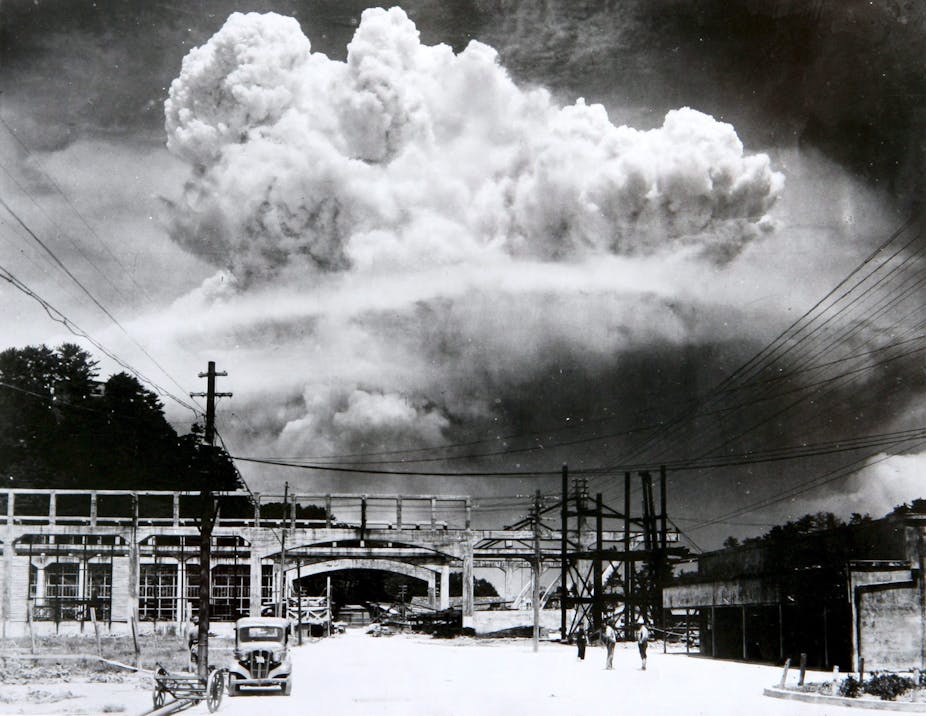With the end of the Cold War, the nuclear arms race came to a virtual halt, but the nuclear threat remained. In regional rivalries, such as those in the south Asia subcontinent, northeast Asia, and the Middle East, the bomb still has great influence, while the threat of terrorists with a nuclear capability has become a new global concern.
The risk of nuclear weapons or fissile materials falling into the wrong hands has greatly increased since September 11. We know that thousands of weapons and tens of thousands of potential weapons – small lumps of highly enriched uranium and plutonium – remain in unsecured facilities in Russia.
These are highly vulnerable to theft by terrorists directly or by criminals who could sell them on to terrorist groups. In the years since the end of the Cold War, there have been numerous cases of theft of nuclear materials in which the thieves were captured, sometimes in Russia, on other occasions in the Czech Republic, Germany and elsewhere.
The grim reality
A sample of statistics from the global nuclear age provides a sobering reminder of the scale of the problem. Upwards of 128,000 nuclear weapons have been produced in the past 68 years, of which about 98% were produced by the US and the former Soviet Union.
The nine current members of the nuclear club still possess 17,265 operational nuclear weapons between them. Thousands are presumably ready to fire at a moment’s notice – enough to destroy the Earth’s inhabitants many, many times over.
As worries about nuclear proliferation have been mounting during the early years of the 21st-century, is there a danger of nuclear alarmism in the US and elsewhere?
Today it is hard to find an analyst or commentator on nuclear proliferation who is not pessimistic about the future. What apparently upsets these experts is that they find little in the current decades that offer means of containing nuclear proliferation.
But we challenge this overly pessimistic outlook. It’s increasingly clear that nuclear alarmism has resulted in overstated claims that emerge from a poor understanding of the history of nuclear proliferation and non-proliferation.

We must learn from the past
There are significant lessons to be harvested from the history of the nuclear weapons era. Because 21st-century proliferation issues have deep roots in the past, for global policies to be successful, an understanding of this history is vital.
A number of myths drive the popular opinion that new nuclear threats are more dangerous than those of the past. For example, many believe that during the Cold War nuclear weapons readily stabilised international politics. Or the converse – that superpower rivalry alone drove proliferation during the same years. But the alarmists have oversimplified strategic dilemmas of the Cold War era and have ignored the regional security issues that contributed to proliferation during these years.
Those analysts who believe that Washington and Moscow alone created the nonproliferation regime ignore the very considerable role played by the international community.
No-one dismisses the fact that nuclear proliferation is an important policy matter. But overreacting to current dangers while wrongly characterising those of the past could drive misguided policies that fail to achieve their desired end. What, then, should be done, and what should leaders and officials consider when determining their nuclear policies and politics?
The future of nuclear thinking
There are two basic ideas that will dominate discussions in the years ahead: expanded nuclear deterrence and applying economic/military sanctions. And from these, we can foresee three general approaches to nuclear non-proliferation.
The carry-over from the First Nuclear Age is the deterrent (and “taboo”) approach that militates against any state’s first use of nuclear weapons. This approach doesn’t rid the world of nuclear weapons, but its supporters argue that it is the most effective way to prevent their aggressive use. However, its most prominent recent proponent and nuclear pessimist par excellence – former US president George W. Bush – clearly had Saddam Hussein in his sights.

Then there are those exponents of the “global zero” option approach, of which nuclear optimist and Bush’s successor Barack Obama is the chief proponent. These thinkers are persuaded that enforcement is best handled by the nuclear weapons states setting an example. Yet those European nations, Japan, and South Korea for whom the US provides a “nuclear umbrella” worry as the US reduces its nuclear stockpiles, wondering if it is also reducing its commitment to their protection.
The third approach – applying economic, military, and other (cyber/assassination) sanctions – also has its supporters. Economic sanctions are currently employed in the cases of North Korea and Iran.
The idea of military sanctions has also been advanced, such as those that Israel employed in the 1981 Osirak bombing of an Iraqi nuclear facility to destroy Iran’s nuclear power plants if diplomacy fails to bring about a satisfactory agreement. But the effectiveness of military sanctions hinge on the suitability of pre-emptive strikes.
Sanctions, in turn, raise important issues. Do nuclear weapons states have the legal right to interfere with states developing a nuclear weapons program? And are sanctions are effective at all?
Ultimately, the real question is: will any of these approaches actually work in ridding the world of the nuclear threat? We don’t know. But that is no reason not to try.
Joseph Siracusa and Frank Gavin are co-convenors of a conference on the global nuclear order being held at RMIT this week.

